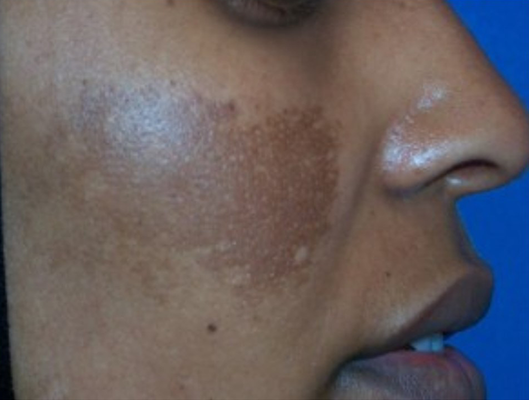What Is Chloasma?
Chloasma, also known as melasma or the “pregnancy mask,” is a common skin condition characterized by brown or gray-brown patches on the skin. These patches typically appear on areas exposed to the sun, such as the face, neck, and arms. The condition is more prevalent in women, particularly during pregnancy, due to hormonal changes, though it can also affect men.

Causes of Chloasma
Understanding the underlying causes of chloasma is essential for effective treatment and prevention. Key factors include:
- Hormonal Changes: Hormonal fluctuations during pregnancy, menopause, or the use of oral contraceptives often trigger chloasma.
- Sun Exposure: Ultraviolet (UV) rays stimulate melanocytes, increasing pigment production and exacerbating the condition.
- Genetic Predisposition: Individuals with a family history of melasma are more likely to develop the condition.
- Certain Medications: Drugs that increase photosensitivity, such as some antibiotics and anti-epileptic medications, can contribute to chloasma.
- Cosmetic Products: Harsh skincare products may irritate the skin and worsen pigmentation.
Symptoms of Chloasma
Chloasma is easily identifiable by its distinctive appearance:
- Irregularly shaped, flat patches of discoloration
- Typically brown, gray, or tan in color
- Most commonly appears on the cheeks, forehead, nose, and upper lip
- May also develop on the neck and forearms
Diagnosing
A dermatologist typically diagnoses chloasma through a visual examination. In some cases, a Wood’s lamp test may be used to assess the depth of pigmentation and determine the appropriate treatment strategy.
Treatment Options for Chloasma
While chloasma can fade over time, especially when triggered by pregnancy or hormonal changes, treatments are available to accelerate the process. These include:
1. Topical Treatments
- Hydroquinone: A skin-lightening agent that reduces pigmentation.
- Tretinoin: Promotes skin cell turnover, helping to fade discoloration.
- Corticosteroids: Reduce inflammation and pigmentation.
- Azelaic Acid and Kojic Acid: Effective in reducing melanin production.
2. Chemical Peels
Chemical peels using glycolic acid or salicylic acid exfoliate the skin, reducing pigmentation over time.
3. Laser and Light-Based Therapies
Advanced laser treatments, such as fractional lasers, target melanocytes and break down pigmentation.
4. Microdermabrasion
This minimally invasive procedure removes the outermost layer of skin, improving skin tone and texture.
5. Oral Medications
In certain cases, dermatologists may prescribe oral medications like tranexamic acid to reduce pigmentation.
Prevention Strategies
Preventing chloasma is often easier than treating it. Here are practical steps to reduce your risk:
- Sun Protection: Use broad-spectrum sunscreen with SPF 30 or higher daily.
- Protective Clothing: Wear hats and sunglasses to shield your skin from UV rays.
- Gentle Skincare Products: Avoid irritants and opt for hypoallergenic, fragrance-free options.
- Monitor Hormonal Triggers: Consult a healthcare provider about managing hormonal changes.
- Healthy Lifestyle: Maintain a balanced diet rich in antioxidants to promote skin health.
Prognosis and Long-Term Management
Chloasma often improves with consistent treatment and lifestyle changes. However, recurrence is common, particularly with sun exposure or hormonal fluctuations. Regular dermatological consultations and diligent skincare are key to maintaining results.